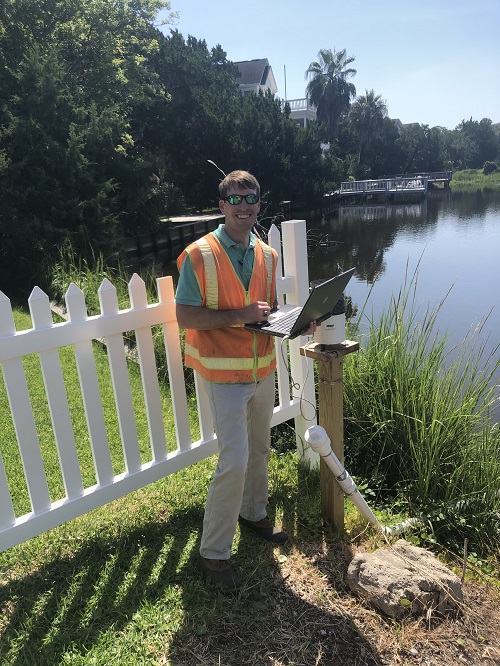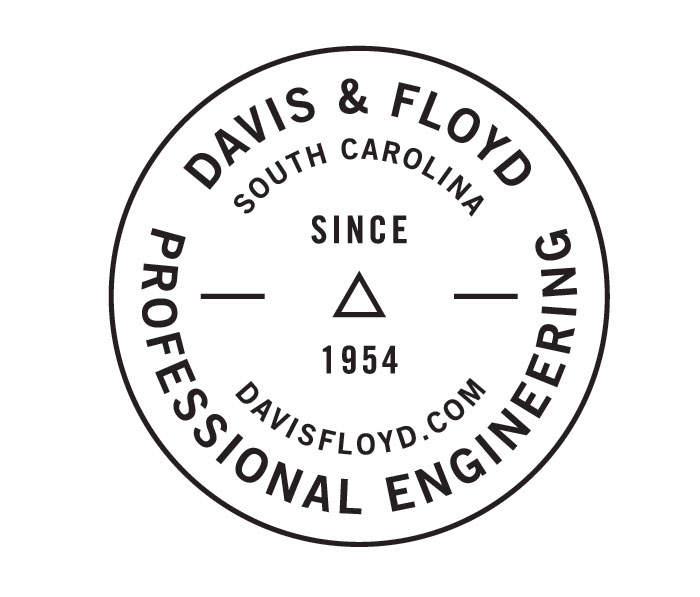
He’s All About Water: Meet Davis & Floyd’s Ryne Phillips, PE
Ryne Phillips, PE, is the stormwater market sector leader and a senior engineer for Davis & Floyd, a leading South Carolina-based, multidisciplinary engineering firm known for working collaboratively with its clients to design and build innovative projects that improve communities.
Based in Davis & Floyd’s Charleston office, Phillips is on the front lines of providing innovative water resources engineering solutions. He holds a MS degree in Civil Engineering (Water Resources Concentration) from Clemson University and is currently a PhD Candidate in Civil & Environmental Engineering (Stochastic Hydrology) at the University of South Carolina.
GroundBreak Carolinas recently chatted with Phillips about the challenges of stormwater management and the implications for our region and beyond.
Give us an overview of the stormwater market sector as it pertains to Davis & Floyd.
The stormwater market sector at Davis & Floyd covers consulting, design, and management of both natural and manmade waterways and waterbodies. Our work covers everything from stormwater tunnels and pump stations to FEMA floodplain compliance to residential landscape drainage solutions and everything in between.
What is the profile of your typical clients?
Our core clients are generally local and state governments and we have historically focused on coastal communities. Recently, we have been expanding our services to cover communities from the mountains to the sea.
What types of projects do you get involved in?
I have historically been heavily involved in community stormwater master planning and regional hydrologic/hydraulic studies for transportation infrastructure projects. I tend to thrive on the big picture and less on the intricate design details.
Explain your role as the stormwater market sector leader.
My role is twofold as stormwater market sector leader. On the technical front, I help manage our stormwater staff by mentoring junior engineers and providing tools and resources to cost-effectively deliver projects. On the business development front, I lead and support strategic water resources pursuits through proposal development, existing/potential client capability briefings, and development/maintenance of client relationships.
How did you get into the stormwater field?
I grew up in the small town of Cheraw, S.C., playing and swimming in nearby creeks and ponds, so water was always part of my life. When I went to Clemson as an undergraduate to study agriculture, I took a soil and water conservation course and began to develop an interest in stormwater. I worked in the agricultural irrigation and drainage industry as well as stream and wetland restoration industry, and eventually landed at David & Floyd primarily focusing on stormwater. My career path has been a roller coaster, but stormwater has managed to persist.
You represent Davis & Floyd as one of the state’s experts when it comes to water resources engineering. Give some examples of how you share your expertise.
I have found presenting at conferences and organizational meetings to be a great avenue for sharing experiences and knowledge. I also have the honor of serving on various committees and panels for local governments and universities where I can help advance both science and policy.
How does your role fit into the company?
Water has always been a core business at Davis & Floyd, and we have strived to focus on practical solutions and long-lasting relationships. This works great for me because I love all things water and especially using my knowledge to help solve problems whether it is a flood problem or permit approval.
How does what you do fit in the overall sustainability movement? Challenges to the movement?
When it comes to a development or a flood mitigation project, my overarching goal is to always provide a sustainable stormwater solution. I have full access to our land planners and landscape architects, which helps promote and implement green infrastructure and low impact development principles.
The biggest challenge with these practices is cost and the built environment for which these solutions would be placed. Many of the green infrastructure solutions are very costly and small communities do not have the capital to install or maintain. In heavily developed regions with poor infiltration capabilities, there may not be a feasible green (sustainable) solution.
You received your undergraduate and master’s degrees from Clemson, and now you are a PhD student at USC. Do you bleed orange or garnet?
My blood will always be orange, but I have learned to grow fond of USC over the years. Both are great schools, each with unique strengths.
How do you keep a work-life-school balance?
With two little ones under three, this has been a challenge. I work hard during the day and early evenings so that I can completely reserve the weekend for my family. At times, I have to consciously stop work and just rest, which is tough for me, as my wife would agree.







